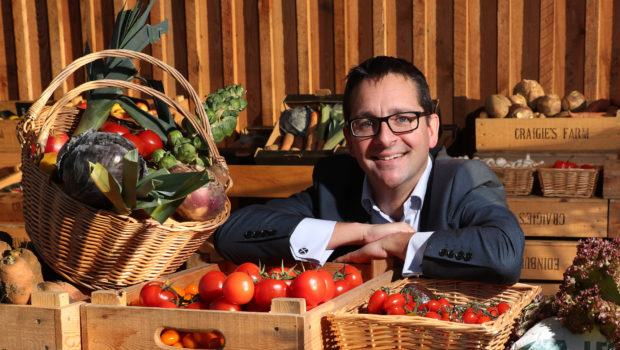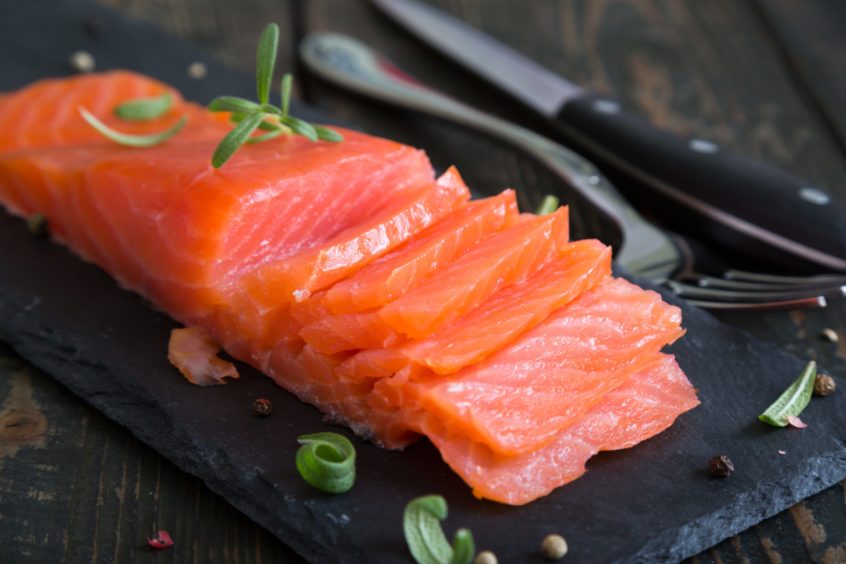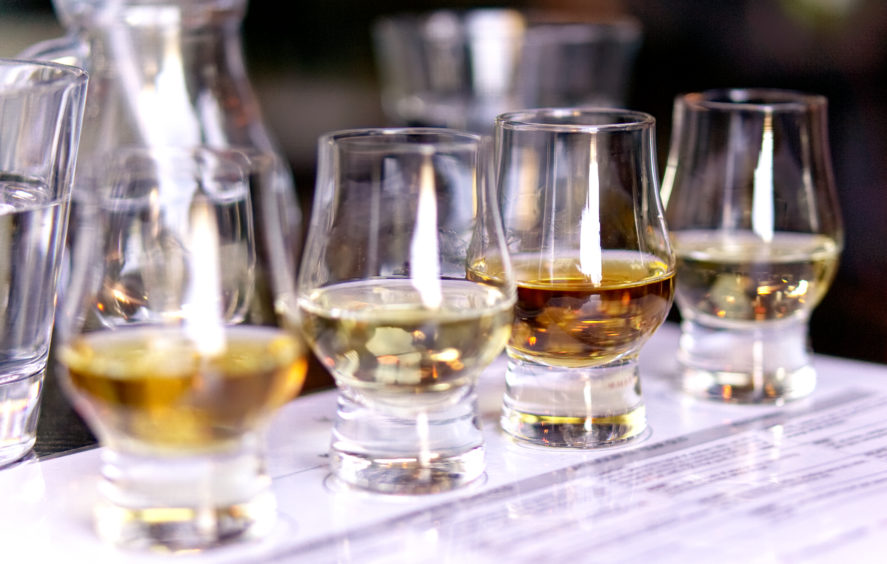Scottish Food and Drink Fortnight will champion local producers, says James Withers, as he reveals the challenges and opportunities, post-Covid.
At the start of the year, Brexit was the single biggest threat to Scotland’s food and drink sector. But a global pandemic and escalating trade wars have wreaked havoc.
With the whisky industry losing millions every month in lost exports, having been hit by punitive US tariffs in a tit-for-tat dispute with the EU, and markets hugely disrupted as the world tries to get to grips with Covid-19, the full impact is yet to be measured.
But an ambitious plan by industry body Scotland Food and Drink to double turnover in farming, fishing, food and drink to £30 billion by 2030 has suffered a clear setback.
Now, in Scottish Food and Drink Fortnight – which sees the sector come together for a series of events across the country, this year virtually – the focus shifts to making up for lost time.
James Withers, chief executive of Scotland Food and Drink, estimates that could be two years.
He said: “We’re going to have to take a long hard look at that ambitious plan out to 2030. On a long-term timeframe all the trends that were working in favour of Scottish food and drink producers and farming and fishing are still there.
“We live in a world where people want quality food, they want a story behind it and strong provenance. So those long-term trends are there, and that growth we want to have over that period between now and 2030, that’s still going to be the ambition.
“There’s no doubt the events of 2020, Covid in particular, have ripped the rug from under this year and is probably going to set us back a couple of years but the pandemic is not exclusive to Scotland or the UK, the whole world has been facing it and I think the way we try and recover and do that quickly and smartly should stand us in good stead. Everyone is trying to adapt to this new world and I think we can come out of it well. It has hurt us, it’s harmed us, it has set businesses back, it will have curtailed some ambitions but there’s still a huge opportunity out there for Scotland.”
That opportunity, James Withers believes, rests in the strengthening consumer trends towards buying healthier foods – and those that are more environmentally friendly. Those areas now become focal points for marketing ‘Brand Scotland’.
He said: “There are two trends here to stay; the health and wellness one – how to support your own health by making the right dietary choices – and environmental sustainability. How does Scotland become an even more environmentally-friendly food producer? Those trends are here to stay and they’re going to be part of the fixture of how we work – and actually in Scotland we’ve got an amazing opportunity there.
“We’ve got one of the most naturally healthy larders in the world. From producing a third of the UK’s soft fruit, to our vegetable sector, to superfoods like oats; we have that opportunity and what we have to do as food and drink businesses is think about how, with our produce, we feed into health and nutrition and if we do that well I think it will create some real opportunities going forward.
“Brand Scotland is everything, we’re selling a story. We can do high-quality healthy, nutritious, environmentally-sustainable food really really well and we’ve seen over the last 10 years or so the development of Scotland’s brand here and overseas. Building that brand means sewing the seeds around health and nutrition and environmental sustainability – all the standards around animal welfare, how we treat our workforce, how we invest in the communities around us is going to be critical. That brand will be critical, if we want to achieve anything like the ambitions we’ve got not only in recovering from Covid and in preparing for Brexit, but in the big opportunities over the next 10 years, that investment in brand will be more important than anything we do.”
Getting the messaging right is something that is controllable at a time when so much is uncontrollable. The Scotch Whisky industry has been hit by a 25% tariff on Single Malt exports to the US since October 2019 last year prompting a 30% fall in Scotch Whisky exports, with the US its largest market.
Meanwhile, with the Brexit transition period finishing at the end of the year, the UK is currently trying to negotiate free trade agreements with both the US and EU. But for now the tariffs on whisky going into the USA remain in place, with millions continuing to be lost in exports every month.
And James Withers isn’t holding his breath for an imminent end to those tariffs.
He said: “The challenge is that normal economic logic doesn’t really apply here. You’ve got Donald Trump on one side and the European Union on the other and a whole heap of whisky producers caught in the middle of that through no fault of their own.
“The end in sight of that dispute looks tough and whether a US-UK bilateral trade deal could do something in around that I really don’t know, but we know it’s hurting and costing the whisky industry hundreds of millions and the sooner we get the tariffs lifted the better, but I wouldn’t say I’m waiting for the news tomorrow that it has happened.”
At the start of the year Brexit seemed the greatest threat facing Scotland’s food and drink sector, with fears over tariffs and the supply of labour. But the pandemic has dwarfed even Brexit as an issue.
James Withers said: “I think coronavirus has brought some perspective in a way. At the start of the year, Brexit felt like the big monster looming on the horizon and then, suddenly, 2020 happened and the pandemic hit. But there’s no doubt that Brexit is a big, big issue for us – 70% of all the food Scotland sells overseas is sold into the European Union, it’s a big part of our export story.
“The mood music at the moment seems like we might not get hit with tariffs and that’s important because some of our most important products, not least Scotch Lamb and Scotch Beef, would get hit with tariffs and that would just shut the market down I think. The tariffs might not be there but other barriers will be – the paperwork and bureaucracy that might be required could be significant and a big cost.
“We know we need to get prepared but how to do it remains the big question.”
Scottish Food & Drink Fortnight starts today. Join us in celebrating the best that Scotland’s food and drink industry has to offer. Use #ScotFoodFort20 and tag us on social media to share your activity over the next two weeks: https://t.co/RziDmrMjx8 pic.twitter.com/CF3vcmhIQl
— scotfooddrink (@scotfooddrink) September 5, 2020
Meanwhile, the message from the industry to consumers during Scottish Food and Drink Fortnight and beyond is loud and clear.
“If we have the average consumer in Scotland just thinking for a millisecond more about the purchase they’re making and thinking about buying local – to me that’s buying Scottish – whether that’s the menu they’re looking at, the restaurant they’re going to book, or what they’re looking at in the supermarket or independent shops, it has a hugely important ripple effect.
“One of the main observations through the pandemic we’ve gone through is people have become more aware of the businesses and services in their area and the jobs that are dependent on supporting local, and I hope that all adds to people thinking a bit more and buying Scottish not just over this fortnight, but for the rest of the year as well. If we do that we’ve got strong communities and businesses and we can all make a bit of a difference on the community around us.
“There’s a real opportunity for Scotland. For the last 10-20 years it’s been a rebirth and renaissance in Scotland’s food story, greater pride in what we’re producing and growing and rearing on our doorstep. Scottish Food and Drink Fortnight is about celebrating that and the local legends we have as businesses on our doorsteps. That doesn’t mean that the opportunities that might be on the other side of the world aren’t important but it does mean we have to strike a balance.
“The big disruptions that will come down the line, some of which we can see coming with Brexit, some of which we can’t – we didn’t see Covid coming – the ability to handle them will come from having spread our risks and having a balance of customers. I don’t think that changes post-Covid, I think it makes it a little bit more important.”












